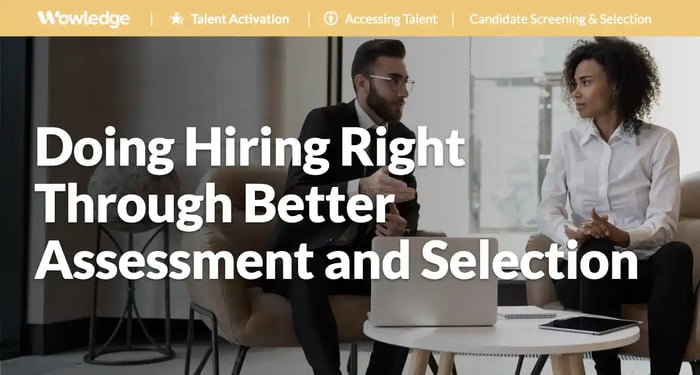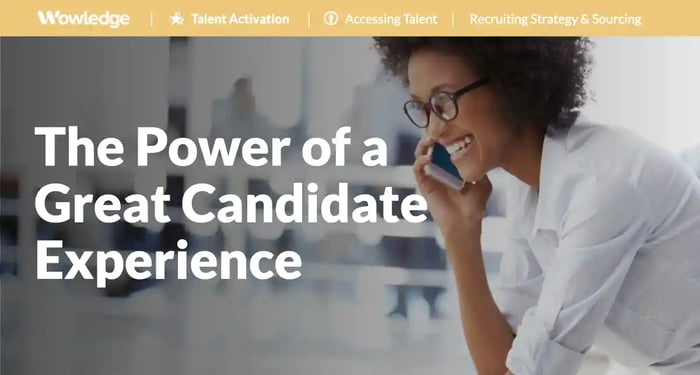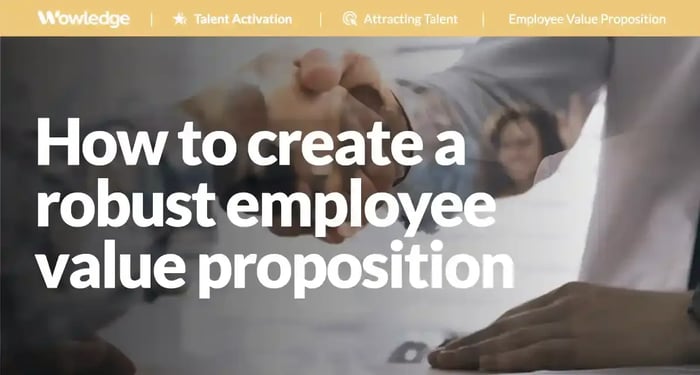Table of Contents
The labor market in the U.S. and most of the developed world has been unusual over the last couple of years. A significant driving factor has been a shrinking labor force in many parts of the world. Add to that the evolving expectations of employees, changes in technology, and significant shifts in different industries, and no wonder it’s been challenging for companies to attract, hire, and retain people. In the US, the COVID-19 pandemic created a whipsaw effect in the labor market, spiking unemployment at the start and quickly recovering, leading to strong demand for talent across many industries and job functions. For the first time in decades, companies that hire people for hourly positions were in an unusual position to find it challenging to attract and hire people and, in response, started raising hourly wages. Starting at the beginning of 2022, inflation took hold, and, with it, fear of a potential recession, causing demand for talent to slow down, as inflation made companies more cautious about hiring while trying to hold on to talent recently hired. This dramatic up-and-down pattern has pressured organizations to improve their assessment and selection of candidates to drive higher employee retention in the face of lowered staffing budgets.
Today, unemployment remains low, while companies have slowed down hiring. At the same time, inflation and fear of a possible recession are bringing down the number of people quitting their jobs in search of a new one. In this wacky labor market, AI makes it easier than ever for job seekers to create job-tailored resumes. and platforms like LinkedIn and Indeed make it easier than ever to submit job applications. It’s not uncommon for recruiters to receive hundreds or more job applications within hours of posting a new job. Many corporate recruiters are overwhelmed by the sheer volume and feel challenged to ensure suitable candidates enter the recruitment process. In speaking with recruiters and recruiting firms, most express that their companies continue to need talent, but not all positions are approved. Many companies are trying to run lean and mean. So, when a manager receives approval to hire, it is critical to ensure they hire the best or right person, thus increasing the demand for improved assessment and selection methods.
Defining candidate assessment and selection
Hiring is a crucial responsibility of many leaders. Their ability to consistently and accurately assess and select high-performing team members significantly impacts how peers and supervisors view leaders. Jim Collins, in his book “Good to Great,” said it well: “They (business leaders) start by getting the right people on the bus, the wrong people off the bus, and the right people in the right seats. All this implies that you know the right people and where they fit in your organization. Equally important is knowing who should not come onboard your bus.
For many companies, even large organizations, hiring processes and protocols have not materially changed over the last few decades. Most managers and recruiters rely on resumes to make initial selections of job applicants and then on interviews as their only tool to assess candidates and predict whether they will become high-performing team members.
Assessment and selection techniques emerged during World War I when the high-volume staffing of soldiers, sailors, and officers created the need for structured employee assessment methods. During the war, the U.S. Army developed intelligence tests to evaluate recruits, which later influenced civilian hiring practices. In the 1920s, industrial-organizational psychology gained prominence, leading to more sophisticated selection techniques. There are many assessment tests today, with interviews being the most common.
At a high level, candidate assessment and selection follow a typical process
- Conduct a job analysis: Perform a thorough job analysis to identify the essential skills, knowledge, and abilities required for the position. This forms the foundation for all subsequent steps. Ideally, this information comes directly from someone doing or overseeing the work today.
- Define selection criteria: Based on the job analysis, establish clear and specific selection criteria that align with the job requirements and expectations of job performance.
- Choose assessment methods: Appropriate assessment tools and techniques are best for evaluating the defined selection criteria. These may include:
- Screening review and assessment (applications, resumes, cover letters)
- Realistic Job Previews
- Skills tests
- Behavioral assessments
- Work samples or simulations
- Reference checks
- Develop assessment materials: Create standardized interview questions, test materials, and evaluation forms directly related to the job requirements.
- Create the assessment and selection decision team: Identify who will be conducting which assessments and how and how will their assessment results be used to make a decision.
- Weigh the evaluation factors: Determine the relative importance of each assessment component and create a weighted scoring system.
- Make the final selection: Based on the combined assessment results, decide on the most suitable candidate for the position.
The current state of assessment and selection
Over the last decade, much has been written and said about the labor market. In the 90s, McKinsey introduced the term ‘war for talent,’ after which most HR professionals and hiring leaders concluded that this battle had ended and employees and job seekers had won. This has resulted in a focus on attracting talent and improving the candidate experience throughout the recruitment process. While it is vital in a tight labor market to create a great experience for candidates to attract them, it’s equally important that managers and recruiters are equipped with the proper knowledge, skills, and ability to assess prospective employees and select the right person for the job that needs to be filled.
It becomes a missed opportunity since recruiters and hiring managers rely primarily on resumes and (unstructured) interviews to make critical decisions about who will come onboard their bus. This stems from a misunderstanding of how resumes and interviews predict job performance. People make inferences about a person’s likelihood to be a high-performing employee based on education and previous work experience (what + where), a common weakness in assessment and selection approaches. At the same time, resumes introduce a risk for bias based on non-job-related information such as gender, ethnicity, geography, educational institution, and previous employers. What is missed is a lack of correlation between accessible but non-job-relevant attributes and job requirements and performance expectations.
Why improvement in assessment and section is critical for businesses to succeed
Poor selection of new employees can have significant negative consequences for companies. Selecting the wrong person can create a longer ramp-up time for new employees, leading to lost productivity. In addition, sustained low productivity and increased turnover may occur. It’s important to remember that the assessment and selection process for hiring a new employee is a time-consuming effort and a substantial financial commitment. Assessing potential applicants thoroughly and selecting the best future employee is well worth the effort. The ability of a leader to consistently strengthen their team with high-performing employees also raises that manager’s standing in their organization.

How to improve assessment and selection of new employees
Many consider "quality of hire" (QOH) as the most critical metric of talent acquisition processes. At the same time there does not seem to be a universally accepted definition of quality, let alone how to measure it. While measuring the subsequent speed-to-competence, job performance, merit increases, promotions, and potential are suitable metrics, they take time and discipline to measure and analyze. In the absence of a universal definition and metric, some things will help companies hire the right people for open jobs in their company based on that person's skills, knowledge, and abilities and how that relates to high performance on the job.
1. Develop a success profile
Most companies rely on job descriptions to communicate job requirements. Most job descriptions are overly generic and focus on high-level job requirements and associated tasks. A job description documents the basic qualifications of the job, such as minimum level of education and number of years of experience with a particular task. A Success Profile should explain the competencies required to be considered high-performing, over and above the minimum or essential requirement. A job competency is a specific set of skills, knowledge, behaviors, and attributes essential for successfully performing a particular job. Competencies encompass technical abilities, such as proficiency in specific tasks or tools, and soft skills, such as communication, teamwork, and problem-solving. A success profile should also include the metrics associated with productivity and performance in that job.
2. Design the assessment strategy
Based on the Success Profile, identify the best ways to assess candidates for the most critical competencies. While not very common, simulations in which someone demonstrates competency are likely the best proof that someone will likely be successful in the job. Many technical skills can be assessed through an automated skills assessment. Skills assessments are usually scored on proficiency levels (e.g., beginner, proficient, advanced, expert), so it is essential to determine which proficiency level is required for high performance. Structured interview questions should be informed by specific requirements for the job and can be used to understand how each job candidate compares based on knowledge, skills, and abilities. It is a good practice to have a scoring sheet for each candidate so that results can be reviewed during a debriefing.
3. Practice effective screening before inviting candidates into a complete assessment process
An effective screening process is intended to quickly identify candidates who are potentially a fit for the job and weed out those who are not. Based on basic qualifications as defined by the OFCCP, a job’s basic qualifications must meet all of the following criteria:
- They must be noncomparative features of a job seeker. This means they cannot be relative, such as being the "best qualified" candidate.
- They must be objective. This means they cannot be based on subjective judgments and must be verifiable.
- They must be relevant to the performance of the particular position. They must enable the contractor to accomplish business-related goals.
The first step is quickly reviewing a candidate’s resume or CV. If done by a person, typically the candidate meets basic qualifications such as education requirements, overall employment record, job title(s) and description or responsibilities. In addition, assess if the candidate would be within a reasonable geography, depending if the job requires on-site or hybrid. Candidates who do not meet basic qualifications should be eliminated from consideration.
Companies are increasingly using tools that match job profiles with job profiles to identify candidates who are likely to be a good fit. In addition to search criteria, an algorithm might be used to infer hard and soft skills beyond what is stated in a resume or CV. In general, the algorithm needs ongoing training for the algorithm to become more effective in identifying the best candidates. This also applies that the more a company recruits for similar jobs, the more tools will be more effective.
4. Train and prepare interviewers for assessment
In general, it’s best to limit the number of people involved in deciding who to select for hire. In his book “Work Rules,” Laszlo Bock, Google’s former Employee Operations leader, argues that four are the optimal number of interviewers to make the best section. In contrast, more interviewers do not further improve the quality of the selection decision-making. Before you conduct interviews, each interviewer should have a clear understanding of what will be required in the job and what a successful candidate looks like, and agree on how and who is going to assess for the critical competencies.
5. Create a great experience
While employee selection is serious business, it does not need to feel like an interrogation or otherwise make the candidate not feel valued. Talented people typically enjoy sharing their competencies and passion for their work and should be forthcoming with examples of how they have used and demonstrated their talent. Even if it turns out that a candidate is less than ideal, it is crucial that they leave a positive impression of your organization and a sense that the process was fair if they are not selected. The Candidate Experience is essential to creating a solid, constructive, and positive employment relationship with any new hire.
6. Check your biases at the door
Even with the best intentions, bias is part of being human. Awareness of potential biases can help avoid falling into their traps when assessing and selecting people for jobs.
Unconscious Biases
- Affinity/Similarity Bias: Recruiters favor candidates with similar characteristics, backgrounds, or experiences. This can lead to overlooking qualified candidates who are different.
- Halo Effect: Focusing too heavily on one positive aspect of a candidate and letting it overshadow other essential factors. For example, being overly impressed by a candidate's prestigious education.
- Horn Effect: The opposite of the halo effect, where one negative trait disproportionately influences the overall assessment.
- Beauty Bias: A tendency to view physically attractive candidates as more capable or successful. This can unfairly advantage or disadvantage candidates based on appearance.
Cognitive Biases
- Confirmation Bias: Seeking information that confirms preexisting beliefs about a candidate while ignoring contradictory evidence can lead to overlooking red flags or exaggerating positive traits.
- Expectation Anchor: Allowing one piece of information disproportionately influences decisions, such as expecting candidates to be carbon copies of their predecessors.
- Illusory Correlation: Believing there's a relationship between unrelated variables, like assuming certain personality traits indicate job performance.
Social Biases
- Racial, Ethnic, or Gender Bias: Making negative judgments based on a candidate's race, ethnicity, or gender.
- Age Bias: Discriminating against candidates based on their age, whether younger or older.
- Name Bias: Making negative assumptions about a candidate based solely on their name.
Other Biases
- Contrast Effect: Comparing candidates against each other rather than objectively assessing them against job requirements.
- Conformity Bias: Allowing the opinions of others to influence hiring decisions rather than relying on one's own judgment.
Organizations can implement "blind screening," structured interviews, skills-based assessments, provide bias training for recruiters, and employ diverse hiring panels to mitigate these biases. It is crucial to focus on job-related criteria and skills rather than subjective impressions or irrelevant personal characteristics.
7. Don’t forget about contingent workers
As companies rely increasingly on contingent workers for hourly positions and professional jobs, it’s essential to consider how you will assess and select people for those roles. While you might not invest as much time and effort into selecting contingent candidates, it’s well worth deciding on a few critical competencies to help high performance.
8. Ensure tests and selection procedures are compliant
In 1978, the EEOC adopted the Uniform Guidelines on Employee Selection Procedures, which provide uniform guidance for employers on determining if their tests and selection procedures were lawful for purposes of Title VII disparate impact theory. There are free resources that can be leveraged to ensure selection procedures are consistent and compliant with those guidelines in the U.S. For companies operating globally, it’s also essential to consider each country's specific hiring regulations and compliance standards to maintain alignment with international laws.
Relevant Practices & Tools
Advanced Recruiting Strategy and Sourcing Practices to Increase Consistency, Speed, and Flexibility. >
Taking recruiting strategy and sourcing practices to the next level demands a reliable infrastructure, deep and highly productive relationships, and an analytics function... more »
Identifying External Supply and Talent Availability of Most Business-critical Roles. >
A key element of advanced workforce planning is the use of external data to determine current and future availability of the talent needed to fulfill a company’s strategic objectives... more »
Using the Selection Process to Promote Inclusive Hiring and Address Unconscious Bias. >
Every process that involves humans is prone to bias. The consequence of bias in the selection process is a homogenous workforce within a workplace that fails to benefit from a diverse... more »
Developing Multiple and Objective Selection Criteria for Replacement Candidates. >
Succession management is essentially a prediction of the future – who will eventually grow into a successful executive or critical role-holder? As such, the adoption of formal... more »
The Success Profile Tool: Specify the Background, Skills, and Capabilities Expected from Individuals in Key Roles. >
A template resembling a job description further detailed with the competencies and useful experiences that separate minimum job requirements from the attributes and experiences... more »
About Wowledge
Wowledge is the expert-driven platform for lean teams building strategic HR programs. Members enjoy access to up-to-date best practices, step-by-step guides, tools, templates, and insights to accelerate the design and implementation of all key HR programs and processes.
Since each organization has unique characteristics, needs, and aspirations, Wowledge's practices are developed utilizing an exclusive stage-based approach – from Core to Advanced to Emerging – that reflects distinct levels of sophistication to meet our members where they are.
Build strategic HR programs with refreshingly easy-to-follow best practices.
Get started for FREE! Learn more.










